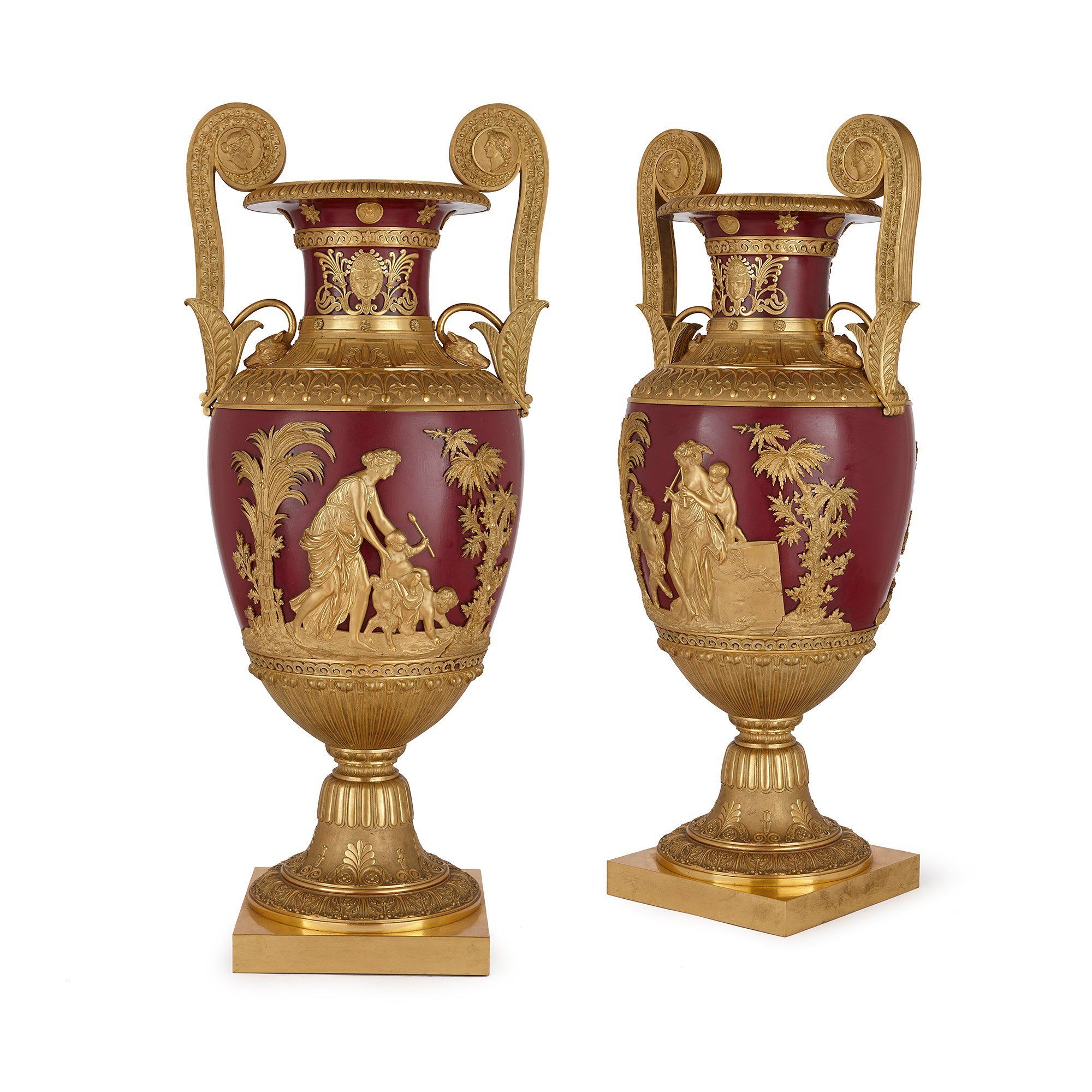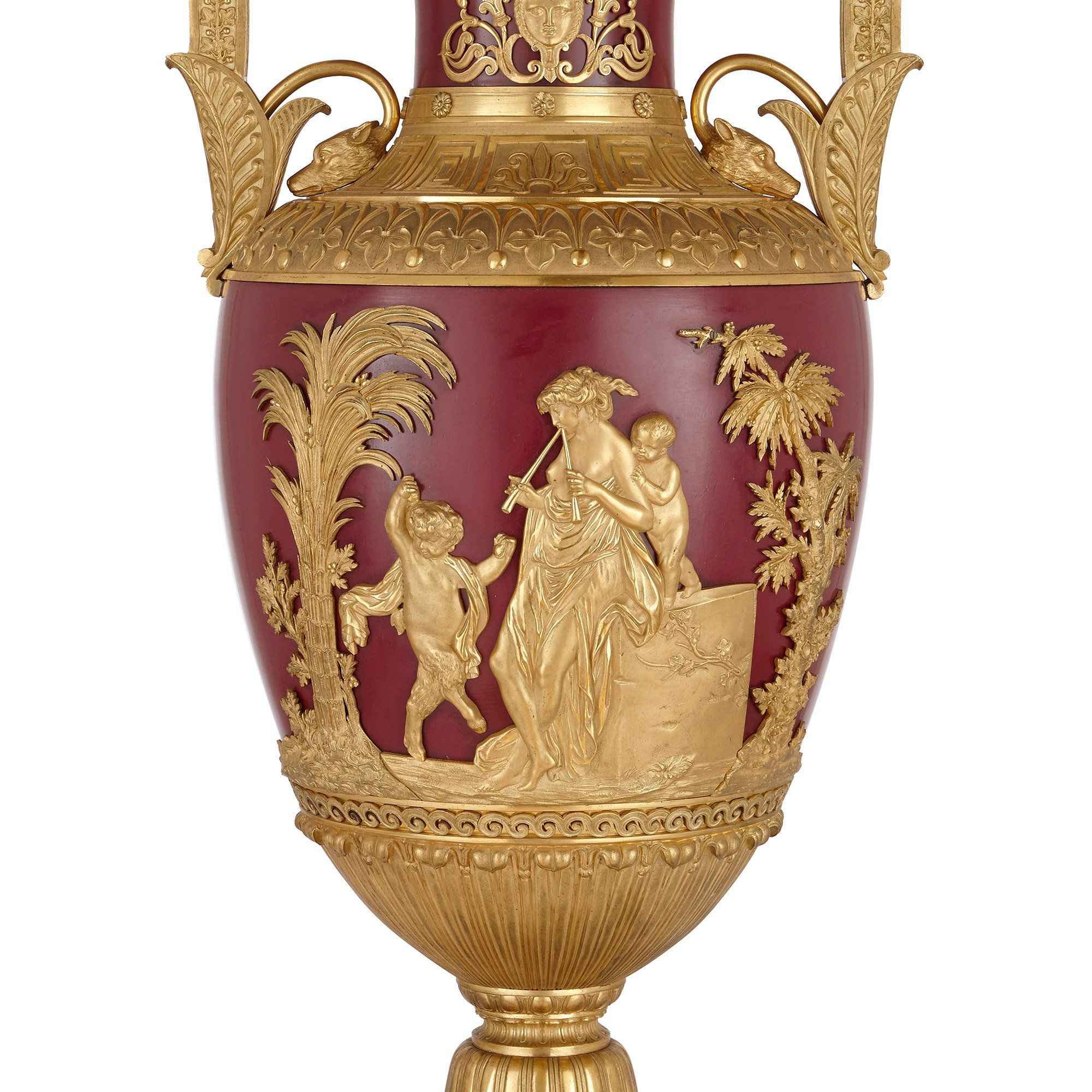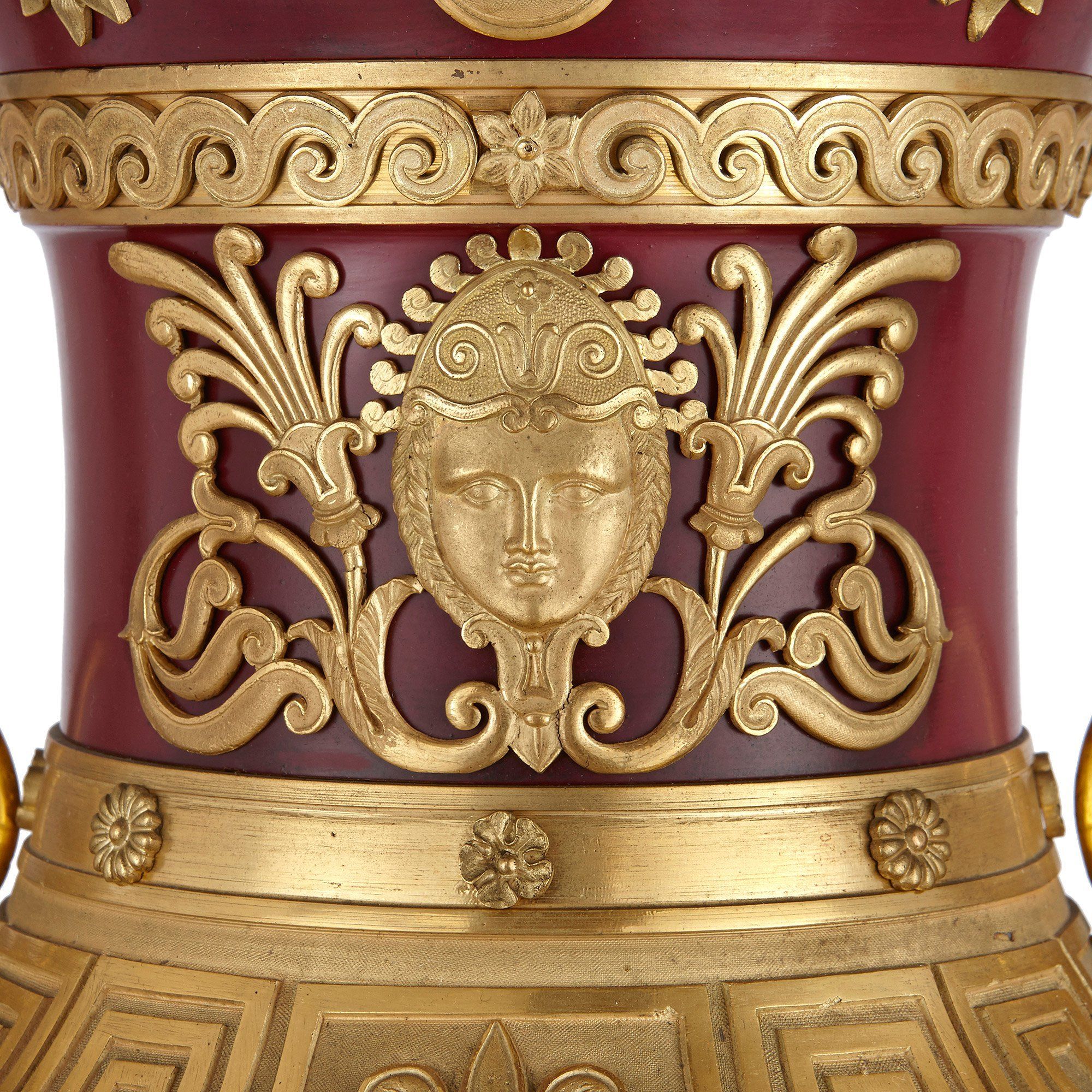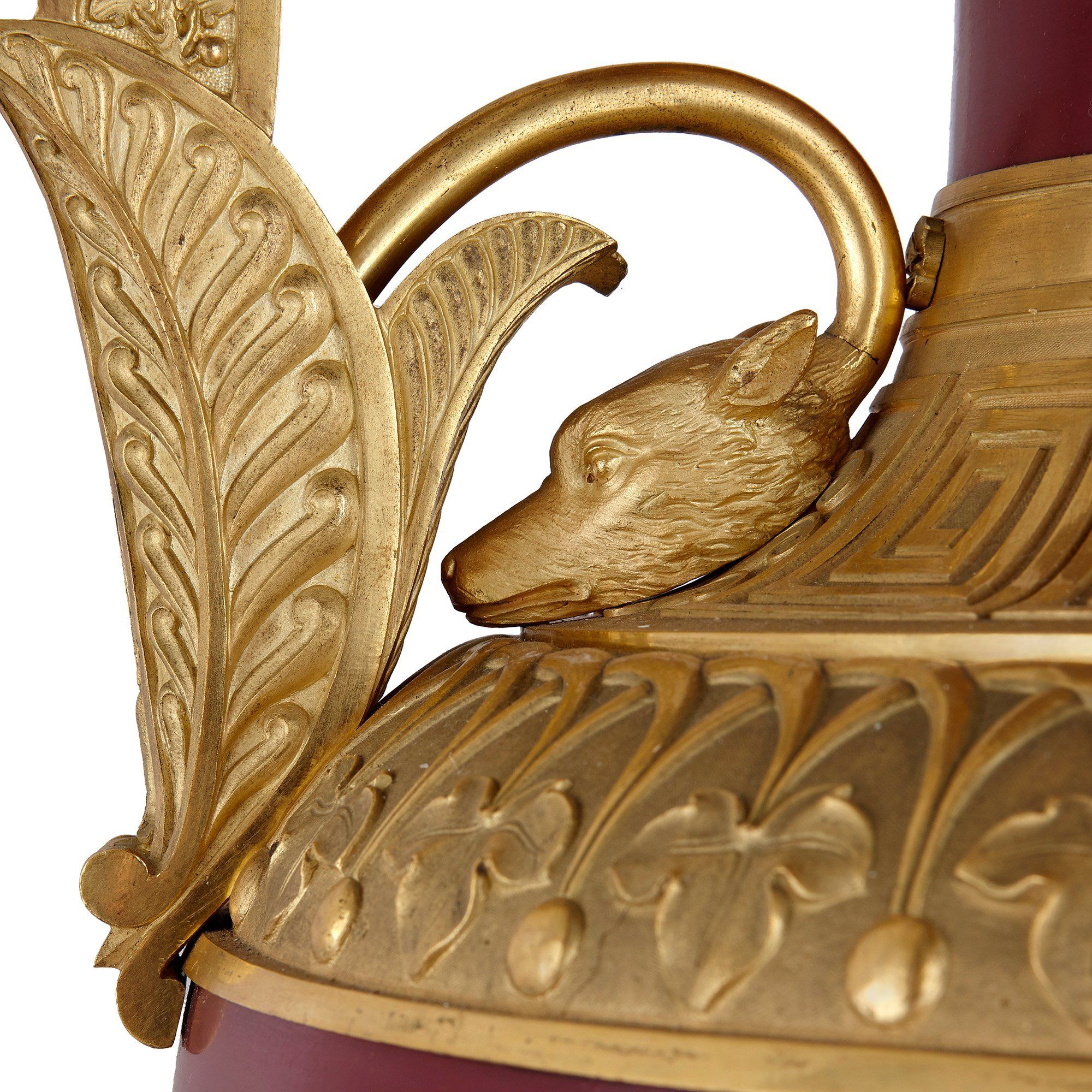These exquisite vases are crafted in the Neoclassical style that swept across Europe to Russia from the late 18th Century. They are of identical design but feature individual decorations and are crafted in ormolu and metal coloured with a rich, burgundy ground.
The vases are set upon square ormolu plinths. The base of each vase is crafted in ormolu of socle form and decorated with bands of scrolling leaf forms and fluted ribbing to the stem. The body of each vase is of robust, ovoid form, and features a heavy lower band of simple, upward-leading, leaf-form ormolu. The centre of each vase is decorated with an ormolu relief of an individual scene derived from Classical mythology, each showing the same figures engaged in different moments from a narrative, set against a metal background which is coloured with a burgundy ground.
The first vase depicts a classically dressed woman helping a baby, who holds a teasel, to ride upon the back of a baby faun, or satyr, amidst a landscape of palm trees. The second vase depicts the same woman playing two flutes whilst the baby faun dances, and the baby stands on a stone pedestal behind her.
Above the figural scenes is a further thick band of ormolu, which features leaf decorations and geometric patterns. Mounted to this band of ormolu are twin dog heads, from which extend upwards twin ormolu handles. The handles are decorated with leaves and foliate patterns, and depict Classical profiles wearing crowns of laurel leaves.
The top of the handles meet the ormolu-mounted rims of the vases, which are decorated with an egg and dart pattern. The neck, flanked by the handles, is waisted, and features ormolu flowers and stars in roundels, as well as waveform banding and classical masks surrounded by scrolling foliage.
The inclusion of children, or babies, was a common theme in Greek depictions of mythology, and might suggest that these vases are decorated according to Classical traditions. Eros, the Greek god of love, or sexual attraction, and Bacchus, the god of all pleasures and the divine sponsor of satyrs, were often depicted as babies and often alongside satyrs. Furthermore, baby or child satyrs were often depicted taking part in Bacchanalian festivities, such as the enjoyment of music and dancing as is portrayed on the second vase by the woman playing the flutes.









